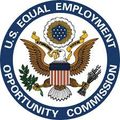 By Jude Biggs
By Jude Biggs
Knowing the Equal Employment Opportunity Commission’s (EEOC’s) top priorities can help you direct your risk management efforts and avoid enhanced scrutiny. John Lowrie, the new director of the EEOC’s Denver Field Office, recently spoke to the Labor and Employment Section of the Colorado Bar Association about the agency’s national Strategic Enforcement Plan (SEP) and how his office will approach those enforcement goals. This article is the first in a series that will share Mr. Lowrie’s insight into how EEOC investigators and attorneys in the Denver Field Office work toward fulfilling the national enforcement priorities.
Certain EEOC Charges Get Immediate Attention
The Denver field office currently has 12.5 investigators, 7 attorneys, 3 mediators and 1 administrative law judge. With the volume of charges received by the Denver office remaining steady at between 1,800 to 2,000 charges each year, charges alleging certain types of claims get enhanced attention which can include immediate review by the legal staff, up to and including the director himself.
Which charges receive this immediate attention? Any charge that touches on one of the EEOC’s six national strategic enforcement priorities. Here we discuss the first two priorities in the national SEP, including Mr. Lowrie’s perspective from the Denver Field Office.
Priority #1 – Remove Barriers to Employment
According to Field Director Lowrie, there are two main components to the EEOC’s first enforcement priority of removing barriers to employment: (1) arrest and conviction records, and (2) medical screening questions and procedures. If a charge alleges discriminatory use of criminal background checks in hiring or the inappropriate timing or use of medical questions or exams, the EEOC will escalate that charge for immediate review.
The EEOC has brought several high-profile lawsuits in the past few years alleging that blanket “no hire” policies that prohibit hiring an applicant with a criminal record have a discriminatory impact on African Americans and other protected classes in violation of Title VII. In the Peoplemark case, however, the EEOC was ordered to pay the prevailing employer over $750,000 in attorneys’ and expert witness fees when the court ruled that no company-wide criminal background check policy existed, an allegation that was essential to the EEOC’s case. Similarly, in the Freeman case, a federal appeals court recently upheld the dismissal of the EEOC’s case, calling its expert’s analysis “utterly unreliable.” Despite its losses, the EEOC is pursuing claims based on criminal background checks, with lawsuits against BMW, Dollar General and other companies still ongoing.
Priority #2 – Vulnerable Workers
The second strategic enforcement priority is the protection of vulnerable workers. Field Director Lowrie explained that this includes agricultural workers, immigrant and migrant workers and mentally disabled workers.
When discussing immigrant and migrant workers, Mr. Lowrie noted the EEOC does not look at whether the workers are authorized to work in the U.S. or if they are in the country illegally, commenting that the EEOC is not ICE or Homeland Security. Instead, the EEOC looks to enforce the anti-discrimination laws under its jurisdiction so that employers do not escape enforcement just because they use unauthorized workers.
As for protecting mentally disabled workers, Mr. Lowrie specifically mentioned the EEOC’s win in a case against a turkey farm in the Midwest in which over thirty men with intellectual disabilities were housed in substandard facilities, denied medical care and harassed both verbally and physically for years.
Stay Tuned for Insight into Other Top EEOC Priorities
In the next few weeks, we will explore the EEOC’s remaining strategic priorities. In the meantime, review your background check policy to ensure you do not have a blanket “no hire” criminal record exclusion. Check that your employment application does not state that applicants will be automatically excluded if they have a criminal record. Make sure that you do not ask for medical information, such as family medical history, or send applicants for a medical exam until after a conditional job offer has been made. Be careful with wellness programs, ensuring they are voluntary. And if you employ vulnerable workers, make certain that your policies and practices do not single them out for disparate treatment in pay, job assignments or other conditions of employment.






